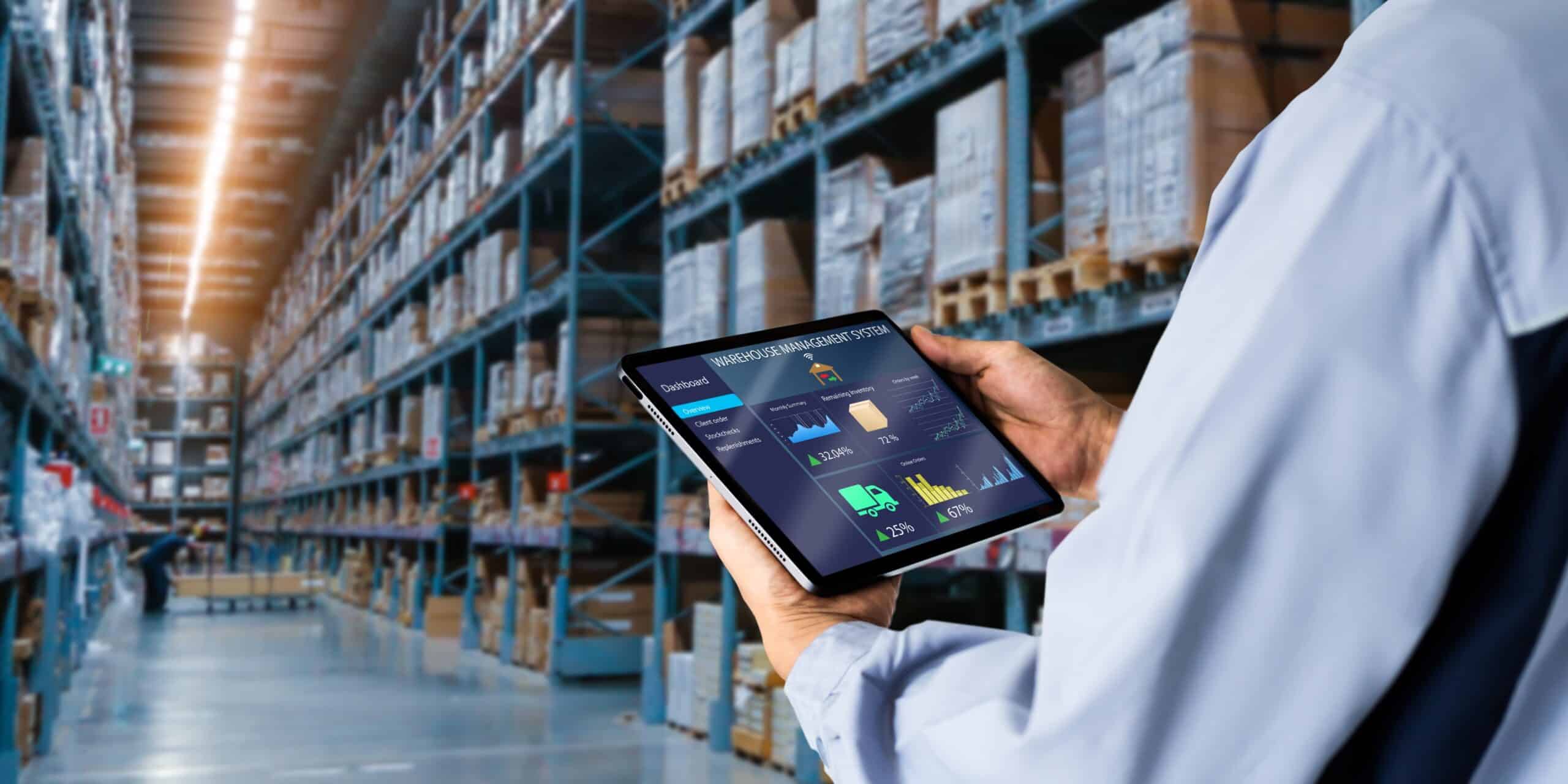Businesses in the global supply chain are operating in an ecosystem that’s transforming at an unprecedented pace. Today’s supply chains are being rapidly reshaped by technological advancements, shifting trade policies, new consumer demands, and growing demand for sustainability. Businesses that fail to adapt to these new global supply chain trends risk being left behind in a world where innovation, advanced technology, and flexibility are standard.
Whether it’s adopting cutting-edge technology like generative AI, building resilience to withstand shifting consumer demand or implementing sustainable practices, companies need to stay ahead of emerging global supply chain trends. Here’s everything you need to know about the latest trends in the global supply chain, including insights for deployment so your business can stay ahead of the curve.
Global Supply Chain Trends to Watch
1. Artificial intelligence (AI)
If there’s any one trend that’s reshaping the workforce as a whole, it’s artificial intelligence or AI. AI is one of the designated “four foundational types of disruptive technologies” that mark the Fourth Industrial Revolution, and this emerging technology is already upending nearly every industry. This is particularly true of generative AI, which is the subset of artificial intelligence that generates entirely new content, including text, videos, and reports. The use of generative AI in the supply chain is booming, with the market expected to grow more than 45% CAGR from 2023 to 2032, to a size of more than $10 billion.
How exactly is AI being used in the supply chain? Firstly, AI-driven systems are transforming inventory management practices by analyzing vast amounts of data to predict demand more accurately. These advanced algorithms can identify complex patterns in sales, seasonal trends, and customer preferences, enabling companies to fine-tune inventory levels to avoid both overstocking and shortages. AI is also being used in warehouse analytics, where automated systems can manage things such as order fulfillment, picking, packing, and shipping processes far more efficiently.
2. Advanced inventory management analytics
Another one of the top emerging global supply chain trends to watch is surrounding inventory analysis and predictive insights. These advanced inventory management analytics practices are transforming global supply chains by offering unprecedented levels of visibility and control. For example, today’s advanced tools allow you to quickly spot extra stock and take corrective action to free up storage space and to rapidly understand which stock is missing and why.
In general, these tools can alert you to expected shortages, so you can reorder inventory in time to avoid stockouts, as well as situations of excess stock. By analyzing historical data and outside factors (such as the current market conditions), inventory analytics tools can generate demand forecasts, identify potential bottlenecks, and recommend solutions before issues arise.
3. Sustainability and ethics in supply chains
Both businesses and their customers are increasingly prioritizing sustainability and ethics in supply chains. For example, one survey found that eight in 10 supply chain executives are increasing their efforts toward supply chain operations. Another found that 77% of companies say their customers indicate a growing demand for sustainability. What we’re seeing is that sustainability has evolved from a buzzword into a true focus for global supply chains.
What exactly does sustainability in supply chains look like? While the exact answer depends on each specific business, and where in the supply chain they’re situated, there are some common themes. For example, companies are choosing to sustainably source their raw materials, which involves working with suppliers who prioritize environmental conservation, ethical labor practices, and resource efficiency.
Another growing trend is the adoption of circular economy principles in supply chains. This refers to companies designing products with their end-of-life in mind and includes recycling, refurbishing, and reusing materials to extend their lifecycle and reduce waste.
4. Shift to predictive maintenance
There are several different ways of approaching the maintenance of supply chain equipment, and we’re seeing a shift towards a proactive approach called predictive maintenance. Instead of waiting for equipment to break down or following a fixed schedule, predictive maintenance uses data and analytics to predict when equipment is likely to fail.
This advanced strategy relies on a combination of real-time monitoring of equipment, as well as intelligent data analytics tools. When a business has robust data analytics infrastructure in place, decision-makers can identify patterns and anomalies in their equipment to determine repair schedules. For example, if sensors detect things such as unusual vibrations or temperatures, and metrics begin to deviate too far from normal operating parameters, it could signal a failure is likely.
5. Improved supply chain visibility
Across the board, improved supply chain visibility has become one of the top global supply chain trends for businesses seeking to optimize performance, mitigate risks, and meet shifting consumer demand. Improved visibility allows companies to track and monitor their progress and outcomes at every stage of the supply chain, from sourcing raw materials to delivering the final product, which enables better decision-making.
How exactly is improved supply chain visibility achieved? Through the use of advanced technologies and the implementation of specific processes. For example, real-time monitoring tools, data analytics technologies, the use of enterprise resource planning (ERP) systems, and supply chain planning suites allow companies to track the end-to-end movement of goods, monitor operations, and make informed decisions based on the most up-to-date data.
6. Enhanced supply chain resilience
Businesses in the supply chain are increasingly realizing the importance of supply chain resilience. Instead of “cutting corners” when it comes to resilience, businesses are investing in technology and infrastructure that can help them withstand everything from geopolitical tensions to natural disasters. Surveys tell us that in the wake of the COVID-19 pandemic, more than 85% of businesses “have worked to de-risk their supply chains,” and that many companies are “now prioritizing a resilient yet efficient supply chain.”
There are several different ways businesses are increasing their resilience. One strategy includes supplier diversification, where businesses select different suppliers across multiple regions to reduce the likelihood of single-point failures. Another method involves using advanced risk management technology, which can identify early warning signs of issues like supplier delays, weather-related distress, and shifting consumer demand.
Monitoring and collaborating with supply chain partners is also another method of enhancing supply chain resilience. Firstly, businesses are using technology to monitor supplier performance. These tools allow you to see how suppliers are doing, track their timeliness, and choose to work with suppliers that best meet your needs. Then, businesses are forging strong partnerships with their most trusted suppliers, which enables all parties to work together more effectively. This can be particularly valuable when it comes to managing risks and disruptions.
Staying ahead in today’s global supply chain landscape requires a deep understanding of emerging trends. As businesses face increasing complexity and unpredictability, leveraging technology, sustainability, visibility, and resilience is critical for maintaining a competitive edge and driving growth.
Seamlessly Adopt Supply Chain Trends with StockIQ
Staying ahead of global supply chain trends requires robust supply chain technology. And if you’re ready to improve the way your business manages its supply chain, then StockIQ is here to help. StockIQ is an intelligent supply chain planning technology that allows you to boost operational efficiency, improve forecast accuracy, monitor supplier performance, and simplify strategic planning.
Find out how StockIQ can help you stay ahead of supply chain trends by contacting us today or requesting a StockIQ demo.

